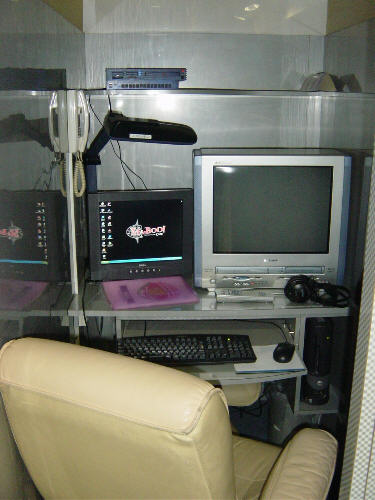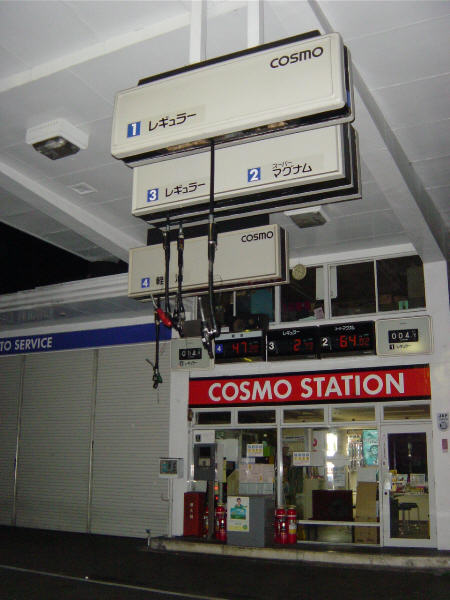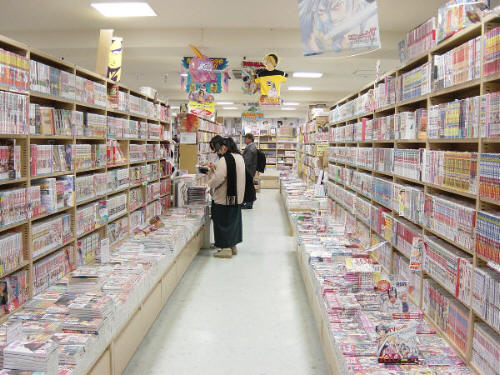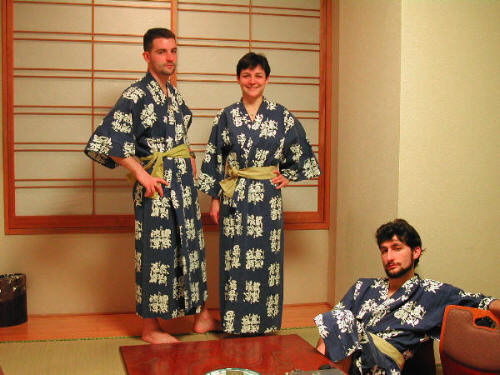Changzhou Chronicle Pt. 4
Special: Japan
![]()
16 February 2003
Hello everybody, after the almost unnoticed Western New Year, on January 31st it was Chinese New Year and we decided to go to Shanghai to party a bit.
Apart from some storms of firecrackers we found empty streets and closed bars and restaurants: all the Chinese were home, watching tv with their families. As they explained us, this is the way of spending the Spring Festival in China: hundreds of millions of people move to their hometowns in order to spend new year's eve with their families, eating in front of CCTV1. Because of the lack of anything to do we ended up doing the same in our hotel room and I can assure you, the show on CCTV is at least as bad as Italian TV.
On the first day of the Year of the Sheep, Andrea, Marco and me left China for Japan, where we spent 10 days, travelling around and touching Nagoya, Osaka, Kyoto, Nara, Hiroshima, Himeiji e Tokyo.
It's been a blow for our savings, but it was really worth it: Japan is another different face of a continent that is able to change completely, within just a few hundred miles.
The impact was particularly brusque arriving from China: we found ourselves somewhere inbetween Blade Runner and a cartoon. Among speaking ads and students in short blue skirts and long white socks we found everything we were expecting and a lot more. The general impression was that the Japanese are way ahead of us!
Here are some of the things that struck me most:
- the PEOPLE:
the Japanese code includes a lot of polite and respectful rituals, which may appear funny to us (e.g. the continuous bowing and the recurring "Gozaimas", pronounced every 4 words, billions of times a day), but in the end the Japanese way of relating to others in extremly pleasant. The people on the street are always very kind and go out of their ways to help.
- the STREETS:
streets are very clean (no Chinese spitting on the ground), cars respect the security distance even at traffic lights and noone ever sounds the horn. No pedestrian crosses the road without the light being green, the underground stations are signalled acustically for the blind and precious space is gained from parking the cars one on top of the other and making the gas pumps "disappear".
- the TECHNOLOGY:
everybody in Japan (even 10 year old children!) own the last generation cellular phone. They use it even more than the Italians (!!!), taking pictures, surfing the net, downloading e-mails. Everything is done in full respect of the others: in most public places you have to turn the tone off.
The internet cafes in the cities all have portable computers or, for 2 EUR per hour, some cubicles with everything from television to dvd player and playstation, slippers included.
 Internet Cafe'
cubicle in Tokyo
Internet Cafe'
cubicle in Tokyo
- PUBLIC TRANSPORTATION:
we mainly travelled by Shinkansen (the fast railway): you can make 200 km in only one hour, including a couple of stops on the way.
It was really awesome: always on time, the very comfortable seats can revolve in order to face always the right direction and everything is extremely neat and perfect.
- the TOILETS:
I had already heard about Japanese toilets and they really exist! I'm talking about the automatic W.C. with heater, shower and dryer. There's even a "waterfall" soundtrack for those who want to cover any embarassing noise!
In the picture, you can see the switches on the arm of the toilet.
- the ACCOMODATION:
while in Europe all hotels are similar in concept, in Japan you can choose between Western hotels, Japanese style accomodation (with tatami, paper walls, earth-level bedding that you have to prepare before going to sleep and communal tube and sauna) and... CAPSULE HOTELS (the accomodation experience you cannot miss if you go to Japan!).
The capsules consist in 1x2 m "rooms" arranged in rows on more than one level, where people can spend the night if they make a last minute decision or if they only have a couple of hours to rest. The capsules look like giant microwave ovens (see picture). You leave your luggage (if you have some) in a locker and the hotel provides you with anything you might need (nightclothes, toothbrush, slippers, shaving kit, moisturizers,...), including a tv in your 2 squaremeter cubicle!
The real drawback of the whole thing is that within a couple of metres you have ten or more other people who come and go and whose alarm clocks ring every half an hour.
And then: electronics shops with the latest computer models and digital cameras, the great noodle soups, the huge manga shops with all the cartoons from my childhood, the taxi drivers in suits, the incomprehensible Zen gardens, the Japanese Rockabillies dancing in the park in Osaka, the awesome look of Mount Fuji,...
The most intense moment was the visit to the Hiroshima museum.
In conclusion - I'm afraid I wrote too much, again - 10 days in Japan weren't sufficient to see everything, but enough to raise admiration and sympathy for this country.
Of course, the return to Shanghai, and even more to Changzhou, has been a shock.
But you quickly get used to things again.
Take care,
Linda
For more pictures of Japan click here.
| CC Part 3 | CC Index | CC Part 5 | ||






